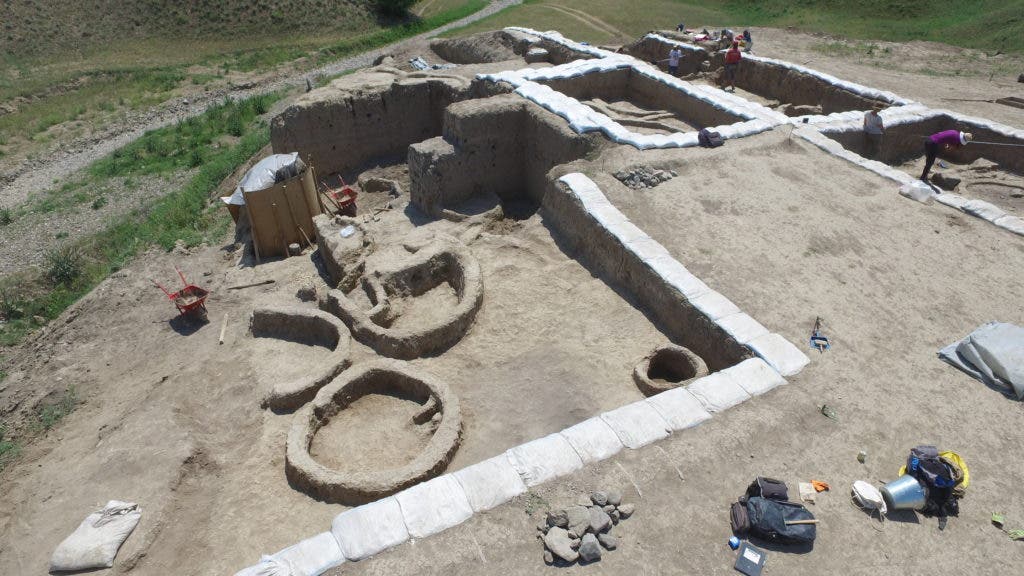Pottery from a site in Georgia has tested positive for traces of wine. This finding makes it the oldest know evidence of wine-making in the world, at 6000 BC, in the Neolithic period. Before this discovery, the oldest chemical evidence of wine was from between 5400 and 5000 BC in Iran, making this new discovery quite a bit earlier than we had thought.
The excavation sites in Georgia are about 50 km south of the capital of Tbilisi and comprise of two ancient villages. Shards of pottery from eight large jars were found at the sites and brought back to the University of Pennsylvania for chemical analyses. The scientists there found traces of tartaric acid, which is a chemical signature for grapes and wine. In addition, the organic acids malic, succinic, and citric were found.
The villages range from the Neolithic. This is the time in human history when humans became more sedentary and developing farming and crafts. One of the most important crafts was pottery, which enabled the fermentation and storage of wine.

“We believe this is the oldest example of the domestication of a wild-growing Eurasian grapevine solely for the production of wine,” said Stephen Batiuk, a senior research associate in the Department of Near and Middle Eastern Civilizations and the Archaeology Centre at the University of Toronto. “The domesticated version of the fruit has more than 10,000 varieties of table and wine grapes worldwide. Georgia is home to over 500 varieties for wine alone, suggesting that grapes have been domesticated and cross-breeding in the region for a very long time.”
From their combination of archaeological, chemical, botanical, climatic, and radiocarbon data, the researchers concluded that the Eurasian grapevine Vitis vinifera was very abundant around the village excavation sites. It was a peak wine-growing region, comparable to the regions in France and Italy today. Adding to its importance, this grapevine was the ancestor of the current wine varieties that we enjoy so much.
“The infinite range of flavors and aromas of today’s 8,000-10,000 grape varieties are the end result of the domesticated Eurasian grapevine being transplanted and crossed with wild grapevines elsewhere over and over again,” said Stephen Batiuk. “The Eurasian grapevine that now accounts for 99.9 per cent of wine made in the world today, has its roots in Caucasia.”
So it seems like we have the Neolithic Georgians to thank for Chardonnay and Merlot.
Journal reference: Patrick McGovern el al., “Early Neolithic wine of Georgia in the South Caucasus,” PNAS (2017). www.pnas.org/cgi/doi/10.1073/pnas.1714728114
Was this helpful?



